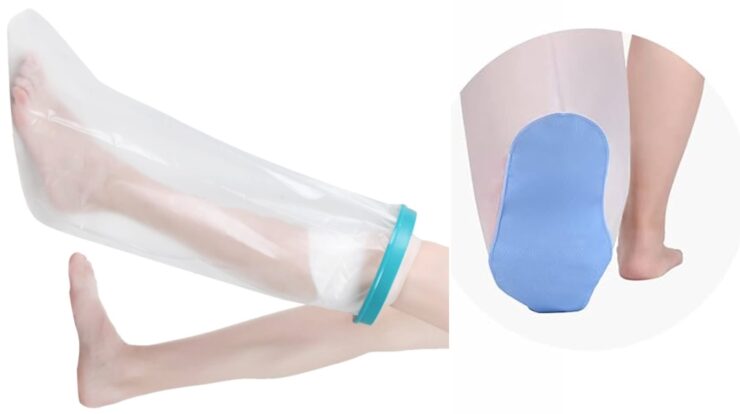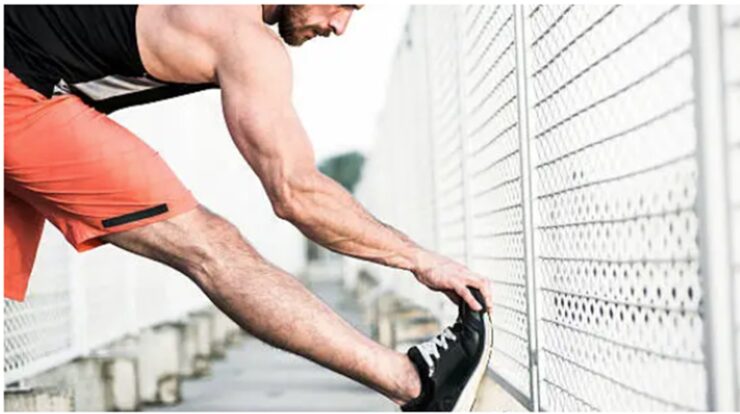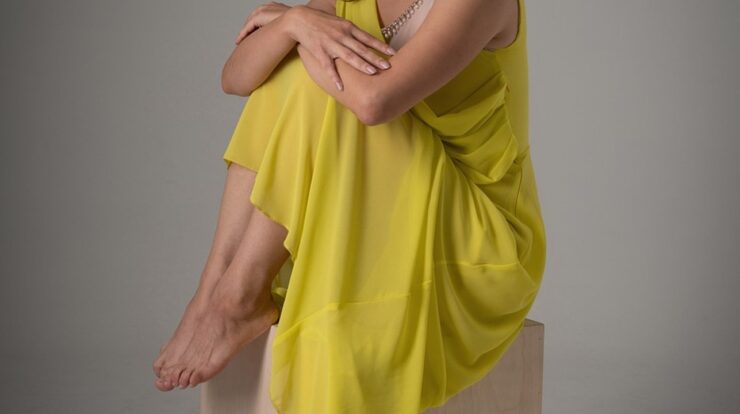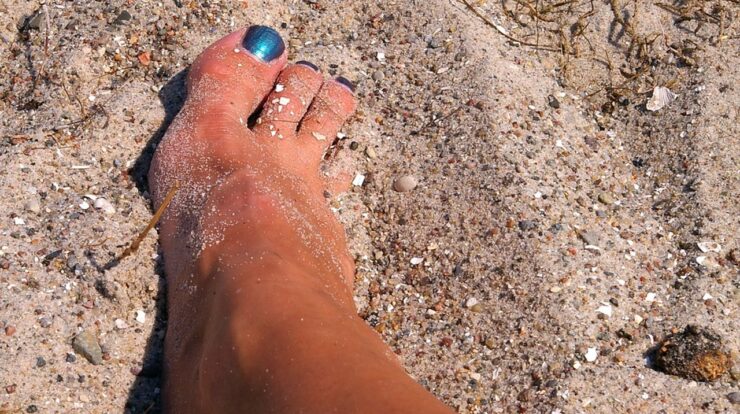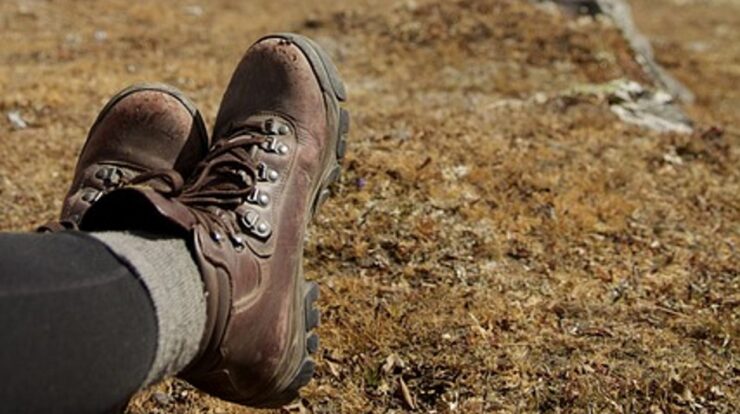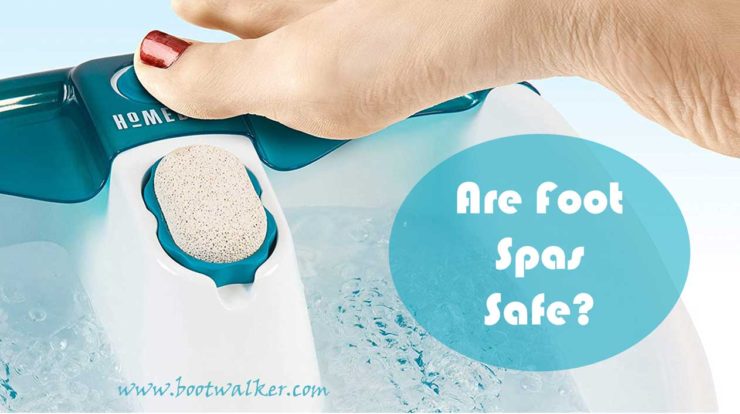
One of the most useful machines that every household needs is a foot spa, especially in the event where there are people who work long hours each day on their feet.
Foot spas are often seen at salons as the first step in a pedicure, but they are also excellent gadgets that will help you relax from the comfort of your home, providing your feet with the aquatic therapy they need after you’ve been standing, rushing and wearing uncomfortable shoes all day.
It is safe to use portable foot spas, however, an electric foot spa massager uses water and electricity and is in direct contact with your feet while in operation and therefore do present a very low risk of shock if not used according to manufacturer’s guidelines.
A top notch foot spa that I researched and found on amazon is the Acevivi foot spas. If you don’t have much money now and are looking for something a little cheaper then consider the HoMedics Bubble Mate Foot Spa.
Most people just look at a foot spa and daydream about kicking out in front of the TV as their feet rest in the relaxing, bubbling water that provides instant relief after a long day.
However, some people may be more concerned about whether foot spas are safe, or even if they are suitable for everyone. What if you have a condition?
What if you get electrocuted? Is it safe to dip my feet in something that may have bacteria swimming in it? These may be some of the concerns that are troubling your mind, but have no fear – you have come to the right place.
By the time you’ve finished reading this, you’ll know all you need to know about foot spas, their benefits, and whether or not they are safe for you. However, in order to better understand why they may or may not be safe, you’ll first need to familiarize yourself with what they are and how they work.
What Is A Foot Spa?
Foot Spas are generally regarded as relaxing treatments for your feet, but they are also necessary for proper foot care and other health reasons. Foot spas are designed to take extra care of your feet, seeing as most people spend all day standing and walking, with the weight of their bodies putting a lot of strain on their feet.
A person’s feet tend to be the limbs that are most often neglected, which is a bad thing as they are the ones doing most of the work. The treatment is suited for both men and women, as men tend to carry extra weights that are usually heavy, while women usually wear high heels, which are most famously known to be uncomfortable to wear for hours and hours on end.
Types Of Foot Spas And How They Work:
It does not matter if you are going to a salon for professional-level, high-quality relaxation treatments, or you’re just chilling at home – both generally work in the same way. To be honest, the treatment is as simple as putting your feet in a bucket water.
If you’ve ever been to the ocean or sat beside a lake on a hot day and dipped your feet into the cool water, then you’ll know all about the relaxing feeling it offers. Foot spas, however, tend to offer a little something extra than just a bucket of water in order to ensure you feel optimal relief.
1. Plain Old Bucket and Water
The old-school version, but one that is still used in salons today, is the plain old bucket of water. Salon professionals will usually put a few drops of essential oils like lavender or lemon to help with relaxation and revitalization, but you can also add buttermilk to moisturize your feet. Then all you’ll need to do is soak your feet for a few minutes.
The water will usually be a little warm to help you relax, but the warmth combined with the soaking of your feet also helps soften the callous skin on your heels, making it easier to remove during a pedicure. However, if you’re planning to cool yourself down on a hot day, you might want to swap out the warm water for something a little cooler, as the temperature of your feet can help relieve your entire body.
2. Mechanical Foot Spas
Another type of foot spa, which is usually the most common one used in households as well as professional spas and salons, is the mechanical foot spa. This involves a plastic bucket-shaped machine that, when turned on, produces bubbles.
The bubbling effect can act as a massager for your feet, to add to the relaxation treatment. However, they can also be used to create a lather when soap is added, cleaning your feet without the need for manual labor as you scrub your feet clean. This type can also be used in combination with essential oils and bath salts to get the most out of the experience.
Mechanical foot spas are the most common and most popular thanks to the various features they have to offer, from controlling the temperature of the water to the different options for the massage features. They are also a relatively inexpensive appliance, making it possible to relax at home without the need to spend much money at the salon each week.
Are Foot Spas Safe To Use?
The irony of this question lies in the fact that foot spas are meant to be relaxing, but the question can cause you to stress more. Well, let me try to ease your mind.
There are a few things you might be wondering regarding the safety of foot spas, like the risks of electrocution, the effects it could have on underlying illnesses, and the risk of infection from bacteria that could be hiding in the tub.
If you’re worried about the combination of a mechanical foot spa that uses electricity and the water in the tub, you may have a point as electricity and water don’t play well together. However, in this case, there is nothing to be worried about.
Since the tub itself and all the knobs for controlling the various features are made of plastic, which acts as an insulator of electricity instead of a conductor, you should be safe. Even the tubing around the cable that connects the foot spa to the electric socket is made of plastic.
The only risk you face is if you overload the tub with more water than there should be and it splashes onto any electrical appliances or sockets in the surrounding area.
Too much water should be avoided, not only for safety reasons but also to avoid a mess, especially when the massaging/bubbling features are turned on. The foot spa itself is very safe to use – it’s what’s around it that you should be worried about.
In terms of any underlying health conditions, there are some people who should avoid foot spas for the sake of their health. For example, those with diabetes should avoid soaking their feet in a tub of water.
Some of the side effects of diabetes involve slow healing, so if you have any cuts or sores on your feet, then you risk getting infected.
Another side effect is nerve damage, so if the water is too hot that it burns your feet, you won’t even be able to feel it, much less react to it, causing further damage to your skin.
The same goes for those suffering from any type of vascular disease in the legs and feet because while foot baths promote good blood circulation, it should not be forced when you have poor circulation in your feet.
Another major concern with foot spas involves the thought of using one at a salon that has been used by countless other customers beforehand. Imagine all the dirt and bacteria that could be left behind, and now you’re supposed to dip your feet in that same tub?
Firstly, this is something you should rightfully be concerned about. While it is standard procedure to not only thoroughly wash and sterilize the foot spa after every use, it is possible for someone to neglect their duties.
How much do you really trust the strangers in the salon? If you see salon professionals clean the foot spas properly during your visit, then go ahead and trust them with your feet. If not, consider getting your own foot spa and enjoy treating yourself to some R&R while comfortably at home.
On the other hand, this could also be a bad idea if you yourself don’t clean or know how to clean a foot spa properly. Rinsing it out is not enough, you would need to properly sterilize it to remove all the bacteria so that you don’t suffer an infection after your next relaxation treatment.
Even when your foot spa or the one at the salon is clean, foot spas should be avoided entirely if you have any type of wound, cut, scab, or even insect bite on your feet. Any condition that weakens the skin barrier is enough reason to stop you from dipping your feet into any kind of water.
Even pedicures can damage the skin on your feet a little, which is why your foot bath typically comes before you have your toenails done.
You can’t even enjoy this relaxing aquatic treatment for a few days after you’ve had your legs waxed or undergone a laser hair removal treatment, seeing as your ankles will also be submerged in the water and they will be sensitive from having the hair removed.
The small openings where the hair was pulled out could be where bacteria in the water gets trapped, leaving you with a nasty infection. The added essential oils and bath salts will also further irritate your skin.
In the event that you’re freezing your butt off, and your feet have succumbed to frostbite – do NOT dip them into hot footbaths. You will do more damage that way.
Not only will the hot water cause further damage to the already damaged skin, but if your frostbite is combined with hypothermia, then the sudden circulation of warm blood from your feet can have a negative effect on your body.
BENEFITS OF FOOT SPAS:
As long as you don’t have any health conditions that could be affected by soaked feet, you have sterilized the tub, you don’t have any damaged skin, you don’t have frostbite, and all your electric appliances are out of range of splashing water – you should be set to enjoy the benefits of foot spas. These benefits include:
- Relaxed feet – which leads to a relaxed body
- Improved blood circulation – stress on your feet can hinder good blood flow
- Relief from migraines and headaches – stress on your body can cause headaches, so a little foot massage should take away the tension.
- Improved mood – you can expect to feel a lot better after pampering yourself and relaxing a bit.
- Improved immune system – this is a result of the improved blood circulation and relieved stress
- Relaxed muscles and joints – the warmth and massage from the water can loosen up tensed muscles and joints
Conclusion
If you don’t belong on the list of people who should not use foot spas for health reasons, then to answer the question of “are foot spas safe?” – yes, they generally are.
Just like any kind of treatment, the only way it won’t be safe is as a result of negligence or improper sanitation. Otherwise, by all means, go out and pamper yourself with the relaxing treatments of foot spas and reap all the benefits they have to offer.

